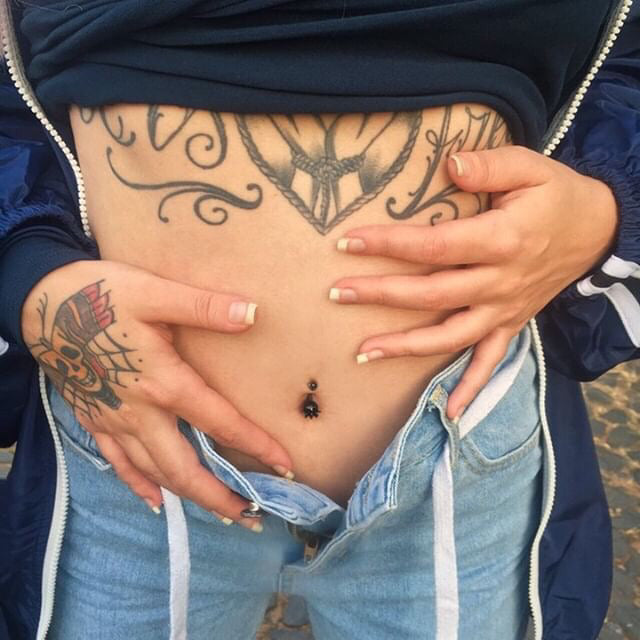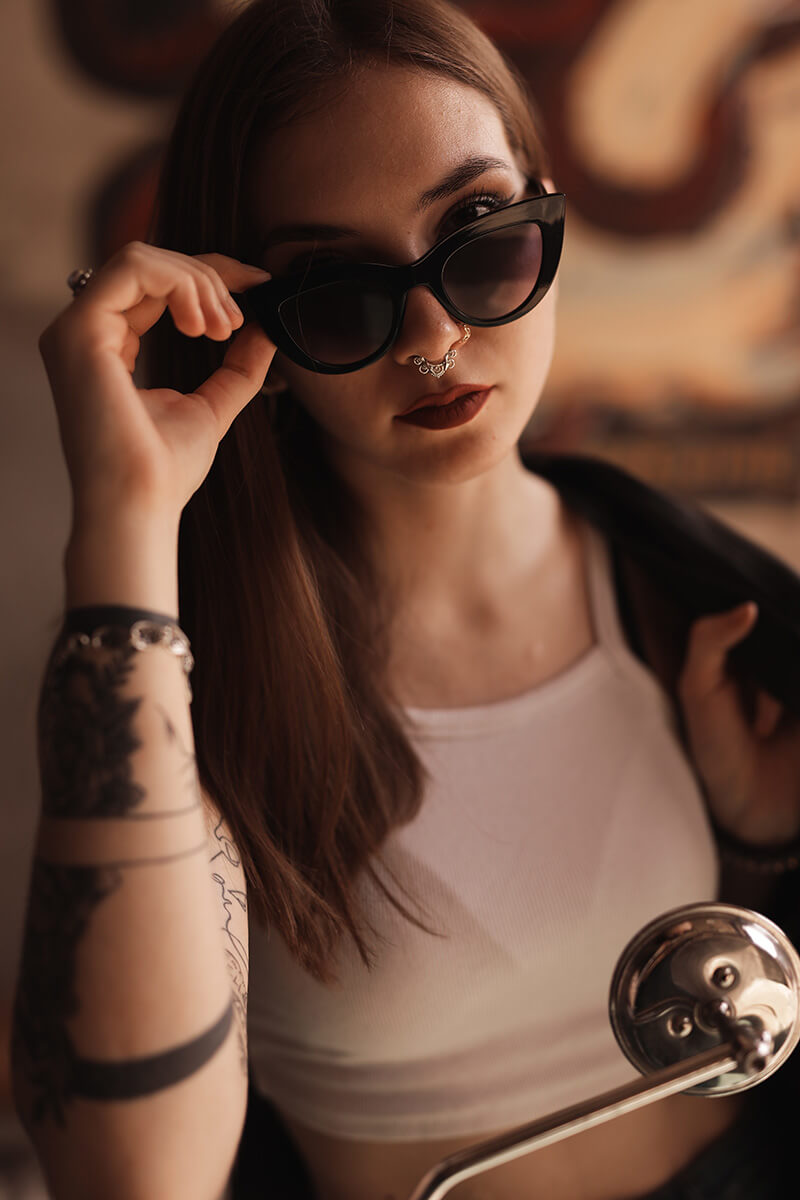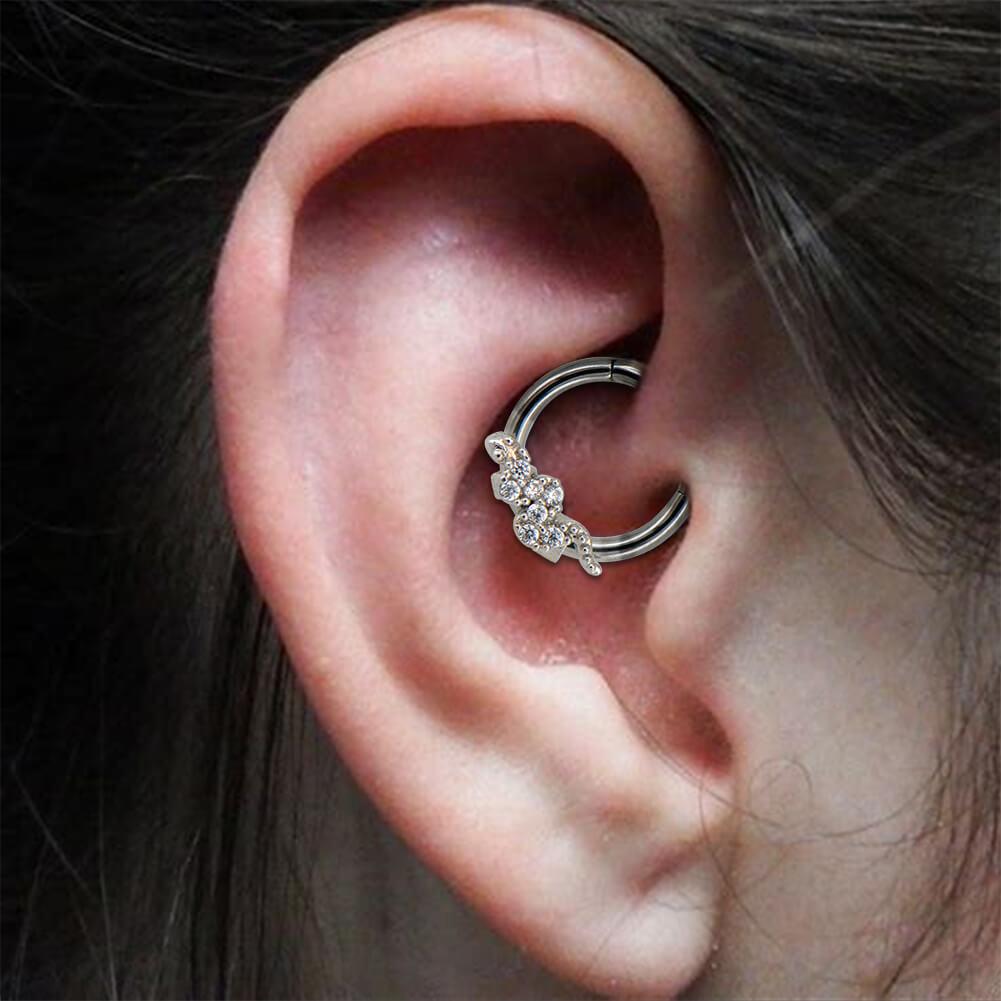
The Ultimate Guideline To Belly Button Piercing
Belly button piercing, also called navel piercing, is one type of body piercing, is very common now. This piercing is placed in the navel, due to the navel shapes, someone may not have the chance to get a belly button piercing.
The Belly Button Piercing Overview
Healing time: 6 to 9 months or longer
Initial jewelry style: curved bar or J-curve; in certain circumstances a ring
Initial jewelry gauge: minimum 14 gauge; sometimes 12 gauge and occasionally 10 gauge
Initial jewelry size: curved bar diameters 3/8(10mm) to 1/2 inch(12mm), with 7/16 inch (11mm)most common; ring diameters 7/16 or 1/2 inch.
Belly Button Piercing Placement
Like the ear, the belly button has become an acceptable place for adornment. Unlike the earlobe, however, navel piercings are not quick and easy to heal. This enormously popular piercing takes longer to heal than any other.
The abdomen is avascular (lacks blood supply), which causes slow healing. It is also subject to stress from normal movement of the body and friction from clothing. Navel piercings have developed the reputation for being troublesome, in part because of their popularity with teens who lack the education or dedication to provide proper care during the extended healing time. They are also inclined to wear junk jewelry that can be disastrous for healing. Teenage girls have been the primary recipients of navel piercing, but women of all ages and men can--and do-get them.
What Jewelry Is Better for the Initial Belly Button Piercing?
The belly button piercing placement and initial jewelry style are more closely interrelated for navel piercings than for many others. Depending on your build, the shape of belly button piercing jewelry that is first inserted-whether ring or bar-could be the one you must always wear. Ring-style jewelry gained early favor as the navel ornament of choice simply because it was the design most readily available. The belly piercing craze preceded the availability of curved bars- and even the mass production of body jewelry. Nowadays, curved bars are the preferred initial jewelry style for most belly button piercings. If your abdomen is relatively flat or your navel is not deep, bar-style jewelry is best.
If your navel is deep and has a distinct lip, a ring may be used for a vertical belly button piercing. On navels with this shape, a diameter of 7/16(11mm) or 1/2 inch(12mm) is most common. A 3/8 inch(10mm) ring should be used only if you have a petite, but perfectly defined. Lone-shaped navel. When a ring is used as initial jewelry for a vertical navel piercing, the belly button bottom must be pierced will away from the edge to keep the belly button ring from protruding too much. But, if you change to a bar later, the bottom ball will be hidden inside your navel. This may be uncomfortable and not aesthetically pleasing.
If you are among the minority of people who have a flap only on the bottom of your navel, you must consult a piercer to see if you are a candidate for a piercing there. A bar is the preferred jewelry for lower-navel placement.
Bar-style jewelry must be long enough to accommodate the expansion of tissue when you recline. Generally an extra post length of 1/16 to 1/8 inch (added to the size needed when you’re standing ) is ample.
Belly Button Piercing Jewelry Style: Jeweled Navel Bars and J-curves
Curved barbells set with sparkly crystals, synthetic stones, or genuine gems are among the most popular styles of body jewelry worn in vertical belly button piercings. There are several basic varieties (curved bar, jeweled navel curve, and J-curve) and innumerable variations.


The jut of the J-curve projects the bottom forward to make it more visible and also prevents it from resting inside your navel. This reduces irritation and allows for better circulation and comfort. This style is excellent if your navel piercing is deep on the underside.
Belly Button Piercing Healing
Because the belly button piercing is challenging to heal, it is imperative that every aspect of this piercing is handled optimally. The navel is no more prone to infection than other piercings; however, it is more likely than many others to become irritated. It also has the longest healing period, so it has a wider window if time for potential infection.
Piercees and medical professionals alike frequently see a normal, healing navel that has become irritated and pronounce it infected. Some discoloration (pinkish, brownish, or purplish), secretion of clear or cloudy fluids, and induration (hardening of tissue) can all be present in a normal healing belly button piercing. A misdiagnosis of infection is especially unproductive when you are prescribed a course of antibiotics; your irritation will not be resolved, and the real cause of the problem will not be addressed.
Wear low-rise pants or loose, breathable garments to prevent clothing from rubbing against the belly button piercing and to allow for good air circulation. Sometimes a change as simple as switching to the fetal position for sleeping will help diminish irritation. The solutions aren’t always complex.
Belly Button Piercing Rejection and Migration
If your navel tissue is very taut you are more likely to suffer from these complications. See your piercer to check the fit of your belly button jewelry, and consider trying a flexible plastic substitute. Sometimes, however, nothing will help, and all you can do it contemplate your navel with disappointment.
What is Belly Button Piercing Migration?
The belly button piercing migration is the belly ring move away from the original places. As we all know, because much body actions will touch the belly parts, like turn around, sit down, bent down, all these activities will pull on the belly tissue, then will make some pulling or drag to the belly jewelry, so the belly ring may move away little by little and then migrated.
To avoid these happen, please pay much more attention to your actions, especially in the first month when the piercing wound is in an important healing process
If your navel tissue is very taut you are more likely to suffer from these complications. See your piercer to check the fit of your jewelry, and consider trying a flexible acrylic substitute. Sometimes, however, nothing will help, and all you can do it contemplate your navel with disappointment.
Belly Button Piercing Bump
Complications arise when you sleep on your stomach, wear clothing that is tight over the belly button piercing, or have an abdomen that creases near the navel jewelry when you sit. Keeping the area dry is challenging, and this contributes to healing problems. Friction, pressure, and moisture can cause problems including a belly button piercing bump, lump, tenderness, swelling, redness, and delayed healing.
An unattractive, scary-looking growth can form at one or both openings of your piercing due to irritation. If it is dark red and resembles raw hamburger, you probably have a granuloma. It may not be as sore as it looks, but it might bleed easily or drain clear fluid. Navels are more prone to granulomas than most other body piercings.
They are not always indicative of a need to give up on your navel piercing (though your doctor is apt to tell you otherwise ); some belly button piercings heal successfully following a bout or two with such growths. You must determine whether your navel piercing irritation is from belly button piercing jewelry that is of poor quality or improperly sized or shaped, or perhaps from other external forceps. That factor must be adjusted if you are to have any chance of healing.
Sometimes performing four to six saline soaks daily will result in an improvement of bumps, irritation, or troubled belly button piercing healing.
How to Do Exercise and activity during Belly Button Piercing?
Of all the body piercings, navel piercings are most vulnerable to stresses caused by physical activity. Because the abdomen is so affected by the movement of the torso, this belly button piercing is extremely challenging for active individuals to heal. During your entire healing period you should be cautious with movements that affect your upper body.
To work out your abdominal muscles, especially during initial healing, avoid full sit-ups. Perform only controlled partial crunches or do exercises that simply contract the muscles with minimal movement of the body. Physical impact to the area must be limited for the piercing to heal. To prevent injury to your navel piercing during exercise or spots, wear a plastic eye patch over the piercing.
How to Take Care of the Belly Button Piercing?
The belly button piercing usually takes 6-9 months to be healed, should pay more attention to the piercing.
Wear low-rise pants or loose, breathable garments to prevent clothing from rubbing against the piercing and to allow for good air circulation.
Do some saline cleaning 2-3 times each day, especially in the first month.
Don’t do much cleaning every day.
Wash the hands before touch the piercing, don’t touch the piercing casually.
It is better to not swim or dip in the water before the piercing is healed.
Change the belly rings until the belly ring loosens up, can be dragged easily.
How to Clean Belly Button Piercing?
The cleaning work is important, especially in the first month, the cleaning should do twice a day.
Wash the hands first, prepare a cup of saline water, then use a cotton swab to clean around the piercing hole, do not touch the piercing hole or the belly jewelry.
After cleaning, dry the saline with a clean towel.
Belly Button Piercing Stretching
Once a navel piercing is seasoned (at least a year ), it can be stretched up one gauge. After you wear the large size for nine months or longer, if you have a substantial amount of tissue between the entry and exit holes, you may be able to stretch again. Enlarging beyond 14 gauge is not advisable if your belly button piercing is close to the surface.
Navels are rarely sites for jumbo jewelry, but with an adequate amount of pierced tissue and very slow stretching, they can safely be enlarged up to 2 gauge or so.
Belly Button Piercing Retiring
If you wish to abandon an unhealed navel piercing, it is best to do so when it is not irritated, infected, or needing to drain. Navel piercings frequently leave a fairly visible scar, and this belly button piercing scar tends to be amplified if you have difficulties in healing. The residual mark may benefit from a scar-reduction product.
Your belly button piercing might not seal up if it is abandoned after healing is over. The hole will tend to shrink, but full closure is not always dependent upon the duration a piercing was worn. Some navel piercings that are established for many years will shut after belly button jewelry removal, and others that are in for a year or less may remain permanently viable. Belly button piercings that are very shallow but fully healed have a tendency to remain open. There is no health risk or medical necessity to wear jewelry in the channel, even if it doesn’t seal shut; the matter is purely aesthetic.
Summary
Despite the lengthy healing period, belly button piercings can be very rewarding. They make a stunning accent to an attractive abdomen, and many women/girls enjoy showing them off, to the delight of piercing fans.





1 comment
It’s good to know that you should clean twice a day in the first month. I have been thinking about having my belly button pierced before summer comes around. Your tips will be helpful for me to have smooth healing and avoid infection. https://adnohr.com.au/x8-body-jewellery/
Anna Davis
Leave a comment
This site is protected by hCaptcha and the hCaptcha Privacy Policy and Terms of Service apply.